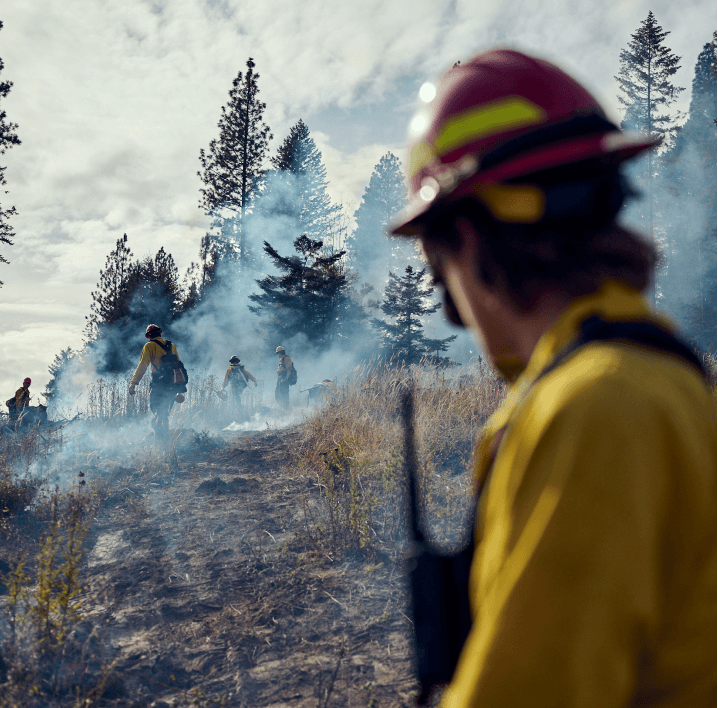One promising solution is for trained experts to intentionally light carefully managed fire to mimic the long history of frequent low-intensity fires. These prescribed fires help keep in check the most flammable fuels – grass, small shrubs, understory trees – and greatly reduce the risk of catastrophic fires.
Highly trained fire managers, working closely with foresters, ecologists, and meteorologists, apply a prescribed (planned) fire on days when the fire is relatively easy to control and is likely to meet management goals. Control lines – roads, trails, and other fire breaks – are set around the perimeter and crews of firefighters – and often community volunteers – are present to help keep the burn contained.
Indigenous Peoples have used fire as a central tool for ecological and cultural management for millennia and continue to do so to this day. The use of fire by indigenous practitioners, known as cultural fire, is guided by an intertwined relationship with the plants, animals, and other species of their home ecosystems as well as indigenous knowledge, practice, and belief systems, passed down through generations.
Cultural burning is distinct from prescribed burning and governed by tribal or traditional indigenous law.
The U.S. Forest Service estimates that 4,000-5,000 prescribed burns are successfully completed annually by federal land management agencies, meaning they remain contained within the predetermined area.
Source: American Forests
Fire is a force that needs to be handled with great care. Thankfully, decades of experience shows prescribed fire to be safe and effective, providing many benefits:
- Reduces fuel loads
- Increases biodiversity of trees, plants, and wildife
- Decreases tree density, encouraging health of older trees
- Fertilizes forest soils
- Creates food and shelter for many species
- Controls invasive species
- Protects water quality
Prescribed fires are the most cost effective and environmentally friendly way to manage our forests. Unfortunately, even “good” or “beneficial” fire releases smoke, which can be a problem for vulnerable people and it’s important for fire managers to work closely with communities to reduce the potential impacts. There are some tradeoffs, but our forests will be safer and create less smoke overall when we use good fire.
Frequently Asked Questions
Yes. Every forest has its own way of dealing with fire. Some, like the rainforest of the Olympic Peninsula in Washington state, don’t experience fire very often – maybe only once every 200 years. On the other hand, dry western forests are used to having more fires, frequently, though historically these haven’t been as intense as we see today.
If fires happen regularly over long periods of time, the forest learns how to keep growing and thriving in the presence of fire. These “good fires” actually help by preventing the build up of fuels, releasing nutrients, and making sure existing trees have space to grow and stay healthy.

TAKE ACTION
Sign Up
Get news and updates delivered to your inbox and learn about ways you can take action in your community.